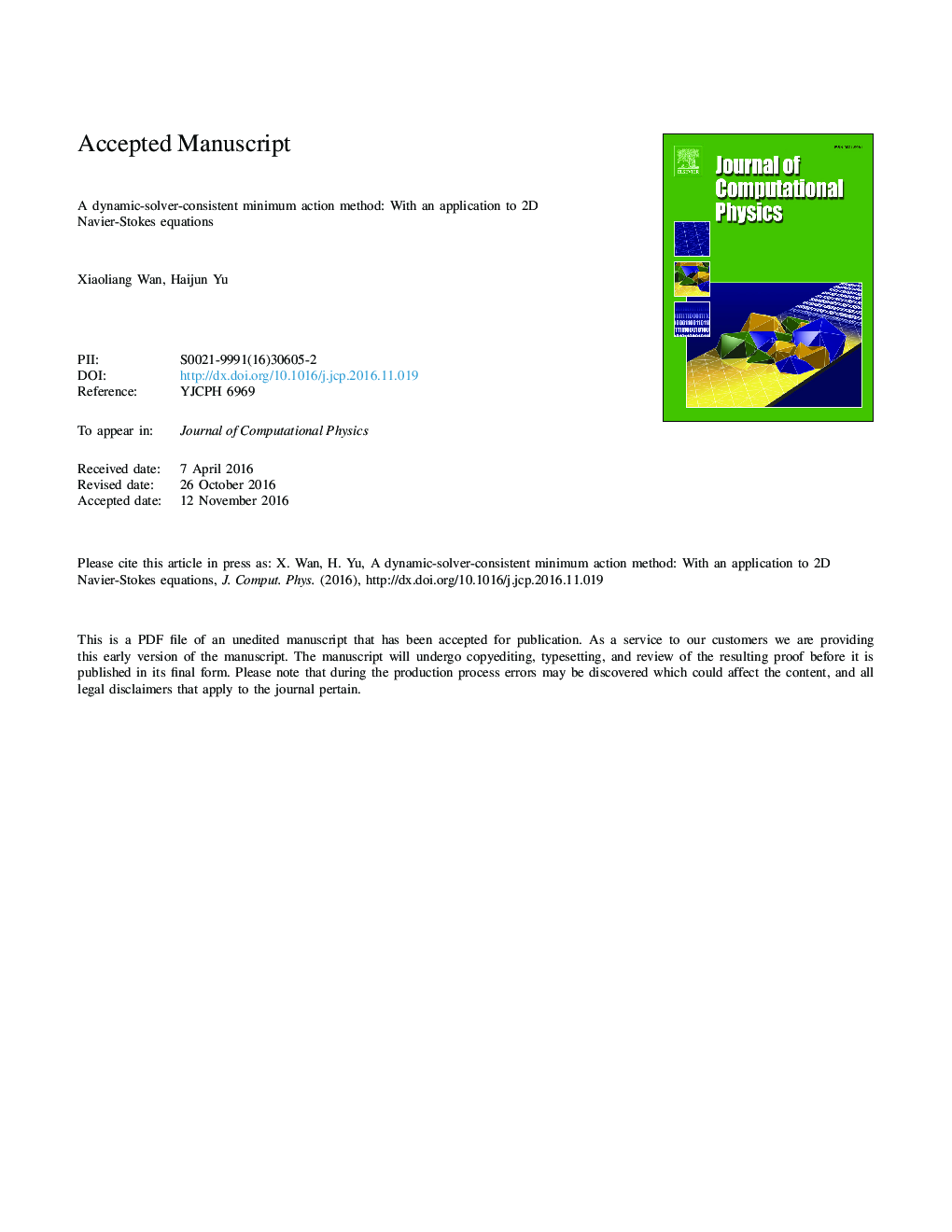| Article ID | Journal | Published Year | Pages | File Type |
|---|---|---|---|---|
| 4967643 | Journal of Computational Physics | 2017 | 30 Pages |
Abstract
This paper discusses the necessity and strategy to unify the development of a dynamic solver and a minimum action method (MAM) for a spatially extended system when employing the large deviation principle (LDP) to study the effects of small random perturbations. A dynamic solver is used to approximate the unperturbed system, and a minimum action method is used to approximate the LDP, which corresponds to solving an Euler-Lagrange equation related to but more complicated than the unperturbed system. We will clarify possible inconsistencies induced by independent numerical approximations of the unperturbed system and the LDP, based on which we propose to define both the dynamic solver and the MAM on the same approximation space for spatial discretization. The semi-discrete LDP can then be regarded as the exact LDP of the semi-discrete unperturbed system, which is a finite-dimensional ODE system. We achieve this methodology for the two-dimensional Navier-Stokes equations using a divergence-free approximation space. The method developed can be used to study the nonlinear instability of wall-bounded parallel shear flows, and be generalized straightforwardly to three-dimensional cases. Numerical experiments are presented.
Related Topics
Physical Sciences and Engineering
Computer Science
Computer Science Applications
Authors
Xiaoliang Wan, Haijun Yu,
